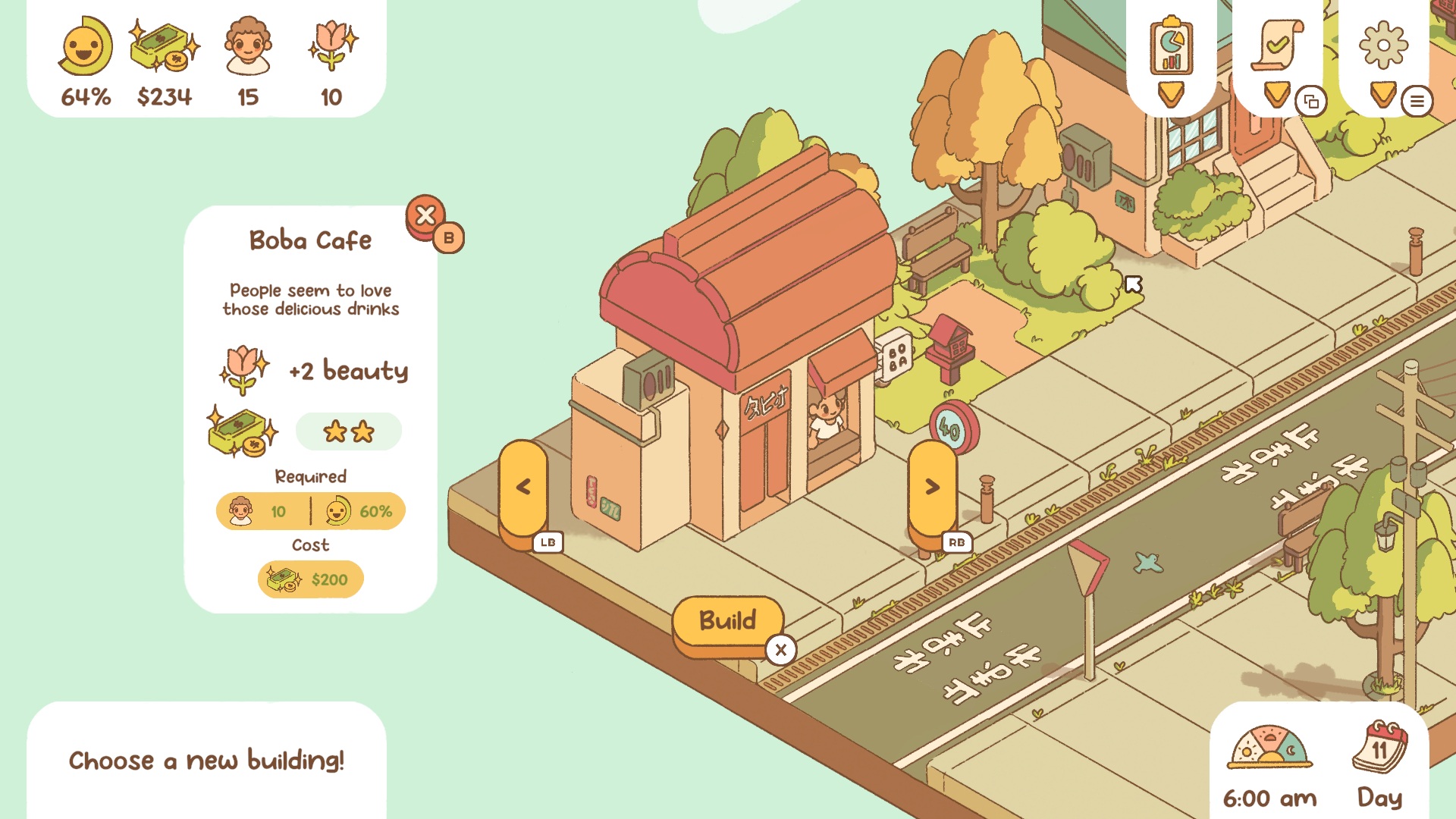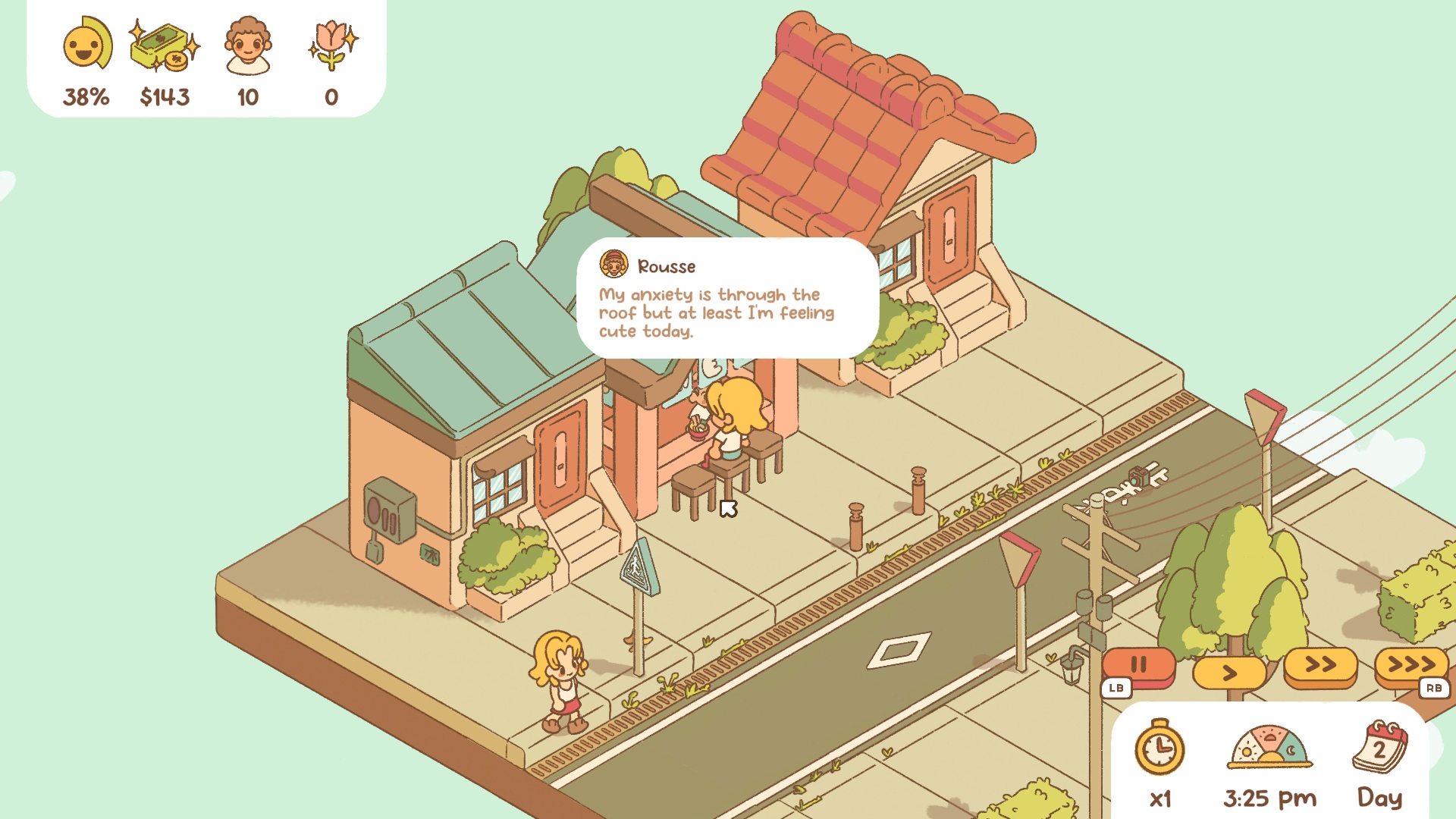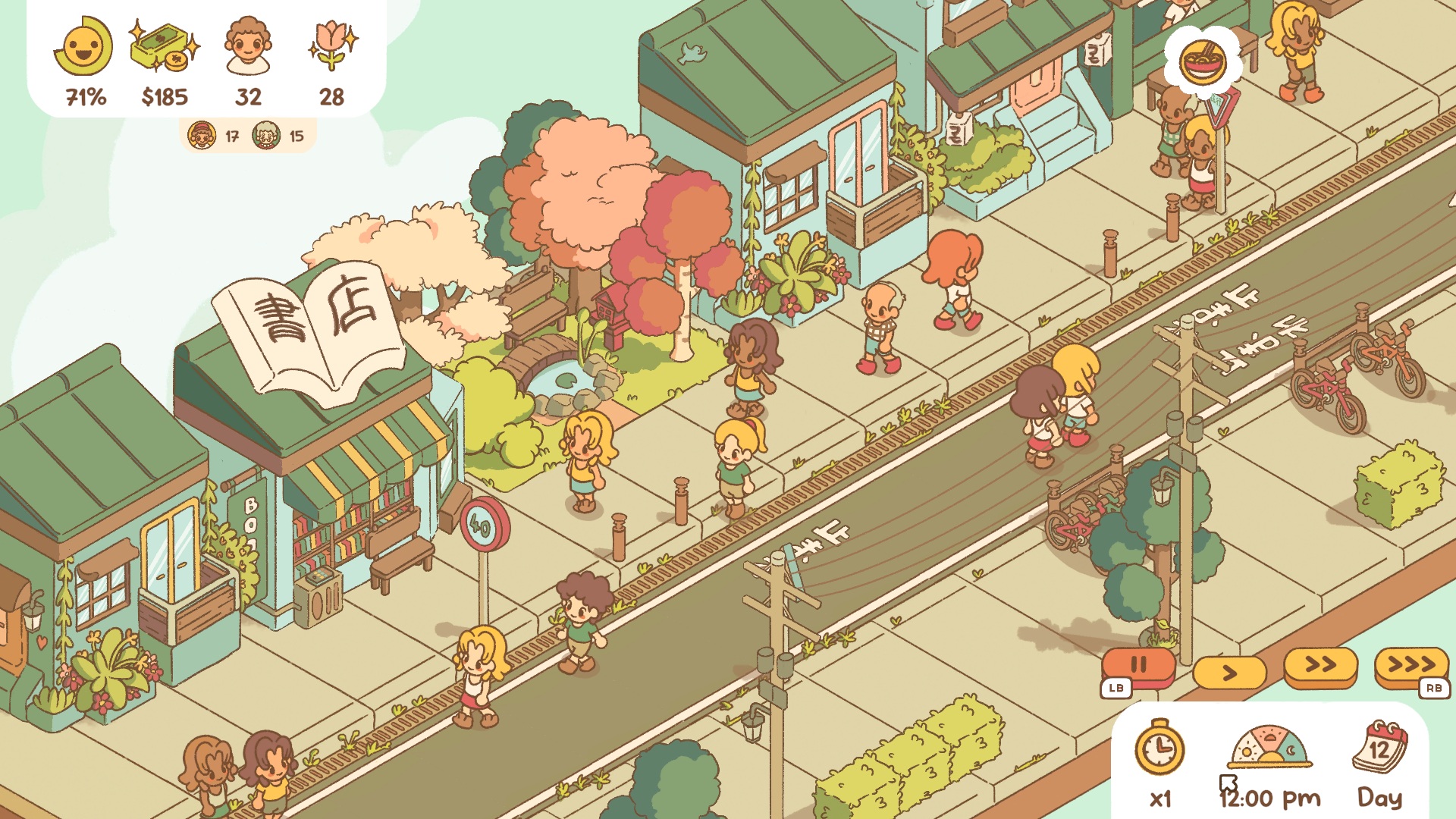I finally tried Minami Lane after seeing over 5,000 positive reviews, and within 4 hours it's already the chillest management game I've ever played
Indie Spotlight | Minamai Lane is a cozy, cute management game I can't get enough of

I'm trying to complete a mission in Minami Lane with the single most important objective: attract more cats. How do I do that? By increasing the beauty rating of my little street diorama that's mine to build up and manage. From renovating existing houses to make them more aesthetically pleasing, to adding a picturesque onsen where my residents can relax, I set down some kombini stores to rake in more cash so I can afford more beautifying upgrades. Some other objectives bring in an added layer of challenge, though, such as one that stipulates I can only have a set amount of buildings to draw in at least four cats every day.
But even with some strategy involved, it's an incredibly laidback management experience overall, and the optional side objective to pet a certain amount of cats is of course one I'm all too happy to fulfill. When my street starts to really come together with feline friends aplenty, I sit back to watch the satisfaction meter of my residents understandably skyrocket. I mean, who wouldn't be happy to walk down a lane and see so many kitties?
I've been meaning to play Minami Lane ever since I saw it take off on Steam last year, and with its recent console release on PS5 and Xbox Series X (it's also available on Xbox Game Pass), I had to finally give it a go. Everything on paper about the indie management game called my name, from its adorable aesthetics to its low-pressure vibes, and my instincts about it were absolutely right, because I've been loving my time with it. I can easily say that after playing it for a little under four hours, I totally get the high praise.
Street life

In Minami Lane, there are five main missions to complete that give you various challenges to meet as you build and manage your own cozy Japanese-inspired streets. The first mission asks you to have a certain number of villagers and build a boba shop, which helps me learn the ropes of its very chill management features.
Each building you can set down, for example, has parameters to fulfill in order to add it to your street, such as a certain satisfaction rating for your residents (which you can increase by adding more attractions and making your street more appealing), or having a particular number of villagers in residence by adding more houses for them to live in.
Both apply when it comes to being able to add the boba cafe, which requires a 60% rating and 10 people to build. Of course, since everything you add also costs money, I have to lean on my ramen shops to rake in some cash. Every shop can be managed to change what it's selling (in this case, ramen noodles) and how much you want to charge to give yourself more profit.
Part of the management comes into play here, because you can also click on residents who visit your shops to see how you can cater to them and get them to keep coming back for more – such as adding more of a particular ingredient to your ramen bowl, or lowering the cost.
Weekly digests, tales from the communities you love, and more

At the start of each in-game day during a mission, you can make changes to your shops and add new buildings. Then, you can simply sit back and watch your street come to life over the course of the day, with the option to clean away any trash they drop, and look for a Tanuki who hides in an object on the street to earn yourself some additional money. As the missions go on, there will also be other ways you can interact with your street as you unlock more features, such as petting cats or clicking on passing cyclists to say hello.
I personally love to click on all the passing residents as they go about their business to see what they're thinking. Not only does this allow me to get some feedback on my shops and the street overall, but it also generally lets me get the tea on their daily lives — with some sharing their anxious feelings, while others clearly feel very good about their own fashion sense.
Each mission introduces something different to contend with, with new attractions to build including book stores, karaoke bars, and a service center that allows you to remove existing shops, or hire a shop investigator to help you gather customer feedback.

From trying to cater to both elders and youths with your ramen menu and karaoke selection, to attracting a certain demographic through your streets set-up, you can comfortably complete all the missions in an afternoon, and by the end of my last objective, I only wished there were more to take on.
Happily, outside of the missions, you can also play in two different sandbox modes. The planner mode provides a more strategic experience, since you have limited starting money and it includes building requirements to add to your street. The creative mode, on the other hand, has no restrictions and lots of starting money, so you're completely free to make the street of your dreams without worrying about objectives or money.
Minami Lane is such a laidback management experience that it's the perfect kind of game to unwind in while you're listening to an audiobook or podcast. I can already see myself dipping into the sandbox modes to do exactly that in the future. If you've been holding out on this one like me, or you're looking for a chill, charming indie delight, this is your sign to give it go.
Minami Lane is out now on PC, Xbox Series X, PS5, and Switch. For more recommendations, head on over to our Indie Spotlight series.

I started out writing for the games section of a student-run website as an undergrad, and continued to write about games in my free time during retail and temp jobs for a number of years. Eventually, I earned an MA in magazine journalism at Cardiff University, and soon after got my first official role in the industry as a content editor for Stuff magazine. After writing about all things tech and games-related, I then did a brief stint as a freelancer before I landed my role as a staff writer here at GamesRadar+. Now I get to write features, previews, and reviews, and when I'm not doing that, you can usually find me lost in any one of the Dragon Age or Mass Effect games, tucking into another delightful indie, or drinking far too much tea for my own good.
You must confirm your public display name before commenting
Please logout and then login again, you will then be prompted to enter your display name.



